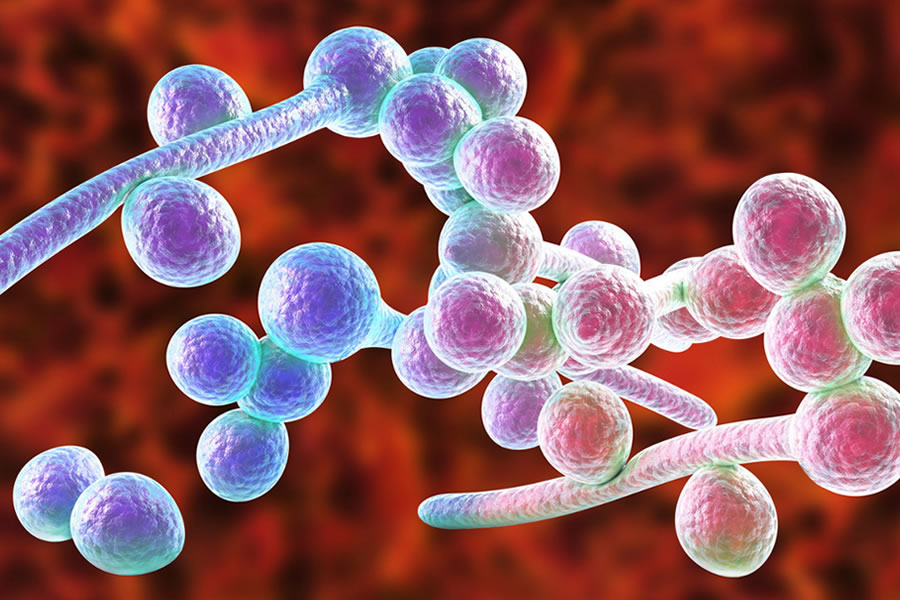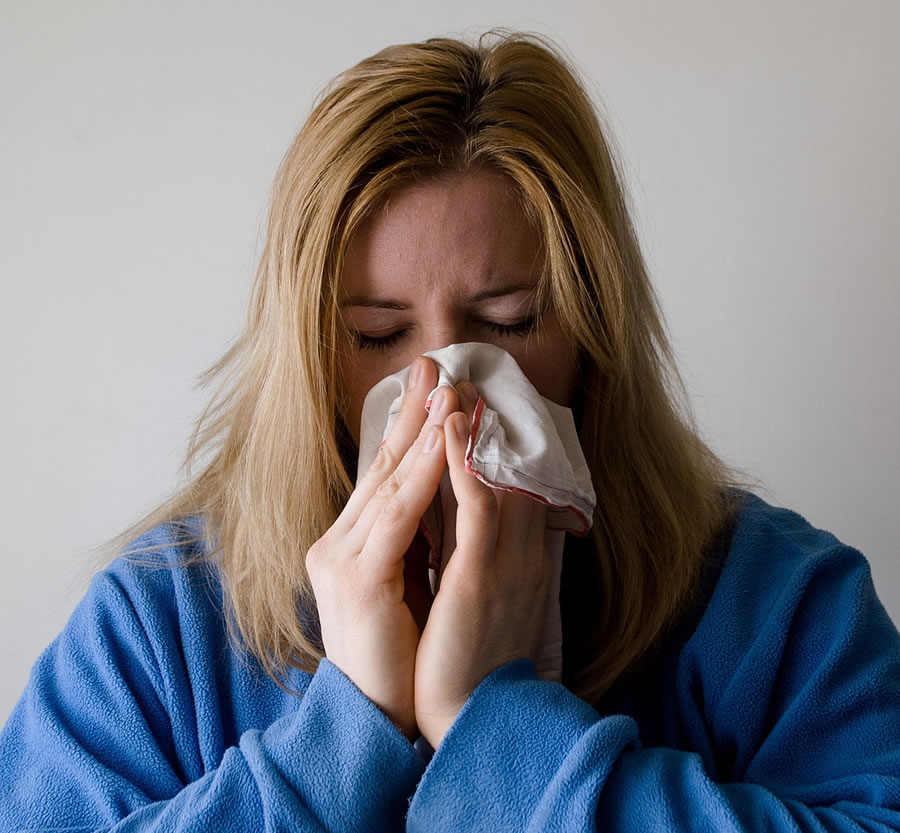Candida Albicans, otherwise known as yeast, is a fungus normally found in the human body. When in balance, candida can actually play a beneficial role in our body, aiding in nutrient absorption and keeping our digestion running smoothly. It’s when candida goes from the equivalent of an elegant dinner party to a full-on rave is when we experience some not-so-pleasant symptoms, not just in our gut but throughout our bodies.
There are a lot of things that can give the yeast the green light to flourish. Some may be out of our control, like a weakened immune system, diabetes, pregnancy, or hormonal fluctuations. Other factors can include stress, eating a poor diet high in sugary processed foods, smoking, and taking drugs (prescription or otherwise) like antibiotics, antidepressants, and birth control. All these things can throw your microbiome out of balance, giving candida the upper hand. But there is help!
Here are a few symptoms that may signal candida is wreaking havoc in your body, and some solutions like diet and herbs that may help get your gut back on track.

1. YOU GET INTENSE SUGAR AND JUNK FOOD CRAVINGS
There have been many studies regarding the effects of candida in the human body. One of the things we know for sure is that Candida loves sugar. If you have an overabundance of candida in your system you might notice uncontrollable cravings for sugary and sweet foods. This steady diet of sugary goodies fuels the candida helping it to grow, leading to other unpleasant symptoms.
2. YOU A HAVE FREQUENT SKIN RASHES & NAIL INFECTIONS
Candida lives not only in us but also on our skin, nails, and scalp. So it’s no surprise that an overabundance can cause skin irritations and infections that can cause the skin to be red, scaly, and itchy.
Also known as cutaneous candidiasis, you may also get acne-like lesions that ooze or pus and can be especially true in areas like the groin, armpits, or folds of skin that are prone to being moist. Athlete’s foot, toenail fungus, eczema, and ringworm are other commonly caused candida infections on the skin, as is jock itch. Even the sides of the nail beds can become red and inflamed from candida.
Usually, topical over-the-counter creams can clear up these annoying symptoms, but these can be the symptom of a bigger issue. And antibacterial creams and soaps can alter the bacteria surface of our skin allowing candida to have its way with us.

3. YOUR DIGESTION COULD BE BETTER
If candida is crowding out the good bacteria in your gut, it only makes sense that your digestion would be suffering. Common digestive woes from candida include gas, nausea, bloating, acid reflux, cramps, diarrhea, and constipation. They have even linked Candida to more serious digestive concerns, like ulcers, IBS, and Crohn’s disease.
4. YOU’RE NOTICING MORE FOOD SENSITIVITIES & ALLERGIES
Too much Candida in the intestinal tract can really cause some serious symptoms. And if you’re noticing you have a lot of food allergies and sensitivities, candida may be the cause.
Candida out of control can cause the lining of the intestine to become inflamed. Over time, it can weaken, resulting in small holes forming in the intestinal wall that can allow unwanted particles like germs, undigested food, and toxins to enter the bloodstream, triggering the immune system to kick into high gear. Also known as Leaky Gut Syndrome, the result is food sensitivities and allergies which in some rare cases can cause anaphylaxis.
Besides the toxins found in our food and water, candida alone can release over 70 different toxic substances which in abundance can cause a range of unpleasant symptoms. If also you feel like you’re super sensitive to strong smells and chemicals, candida may be to blame.
 5. YOU’RE ALWAYS TIRED
5. YOU’RE ALWAYS TIRED
If you’re feeling tired all the time and nothing seems to help, candida may be the root cause. An overgrowth of yeast in your system can interfere with digestion, preventing the proper breakdown and absorption of nutrients in foods. Because of this, studies have linked candida overgrowth to low levels of nutrient deficiencies, including Vitamin A, B6, essential fatty acids, magnesium, and iron, which can all contribute to feelings of fatigue (1, 2).
Yeast also naturally creates their own harmful byproducts which can act as toxins, overworking the liver, and making you feel tired and run down.
6. YOU FEEL BLUE AND HAVE FOGGY BRAIN
Do you feel down or just have trouble remembering things? While researchers are still unraveling all the mysteries of our guts, there is evidence to support that the connection between the health of our guts and our minds is stronger than we ever thought. A troubled candida-ridden gut can mean everything from depression to anxiety, a foggy brain, and forgetfulness. And a troubled gut is what candida loves to take advantage of.
 7. YOU ALWAYS SEEM TO HAVE A SINUS INFECTION
7. YOU ALWAYS SEEM TO HAVE A SINUS INFECTION
If you just can’t shake a runny nose and nasal congestion, it could be candida. And if you’ve been prescribed antibiotics for a sinus infection, they never seem to help candida may be the cause.
Not only can antibiotics encourage candida to grow, but an alarming study by the Mayo Clinic with 210 patients with chronic sinus infections found that 96% tested positive for fungi in their mucus (2).
8. YOU GET FREQUENT YEAST INFECTIONS & UTI’s
While over 75% of women will have at least one vaginal yeast infection in their lifetime, men can also get symptoms of yeast around their genitalia as well. Both can cause the same symptoms, including pain, swelling, itching, painful intercourse, and white or yellowish discharge in women. Hormonal imbalance or fluctuations, frequent douching, and stress can all give candida the right environment to thrive. Candida overgrowth can also cause urinary tract infections but are more often due to e.coli.
9. YOU’VE GOTTEN ORAL THRUSH
Next to our intestines, our mouths are home to the second most diverse population of microflora in our bodies. And when the balance of good flora to bad is out of balance, oral thrush can occur. Essentially a yeast infection of the mouth and uncommon in healthy adults, symptoms can include white lesions in your mouth and on your tongue that may crack or bleed. It’s most common in babies or the elderly, or those with sensitive or weakened immune systems.

What Can Help You Fight Candida?
While you should always consult a doctor or professional medical help if you’re noticing any symptoms mentioned here or others, there are a few tricks and lifestyle changes that can help keep candida in check, while relieving nasty symptoms and improving your gut health.
Diet changes and herbal supplements can work to bring your system into balance. But it’s not uncommon to feel worse before you feel better while your body rids itself of the excess die-off of yeast. Common yeast detoxing symptoms can include things like headaches, dizziness, diarrhea, and other flu-like symptoms.
Start a Candida Cleansing Diet
One of the simplest ways to give candida the boot is to start with a Candida Diet.
Since candida loves all things sugary and processed, a candida diet eliminates sugars, refined carbohydrates, and other inflammatory foods, including caffeine, alcohol, and gluten. That includes baked goods, sodas, candy, cakes, processed foods, white flour, or white rice.
High-sugar fruits and starchy, high-glycemic vegetables are also eliminated for the duration of the diet to starve out the yeast.
What Can You Eat on a Candida Diet?
- Eat lots of green leafy veggies, lean protein, and healthy fats
- Eat legumes, nuts, and seeds
- Choose whole grains
- Garlic, ginger, turmeric, coconut oil, and olive oil all contain naturally powerful candida-fighting compounds.
- Drink plenty of water to keep your body hydrated and to help your liver flush out the toxins.
- Use natural sugar-free substitutes like stevia, monk-fruit, erythritol or xylitol if you need something sweet.
While sticking to this diet may be difficult at first, you may notice you’re feeling better in a short time. Not only will you be rebalancing your gut microbiome, but your digestion should improve, as will your energy levels and mood.
To help with digestion and nutrient absorption while your system is on the mend, try a digestive enzyme supplement like the NOW Foods Super Enzymes.

 5. YOU’RE ALWAYS TIRED
5. YOU’RE ALWAYS TIRED 7. YOU ALWAYS SEEM TO HAVE A SINUS INFECTION
7. YOU ALWAYS SEEM TO HAVE A SINUS INFECTION



